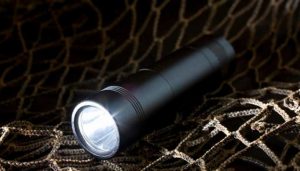 If you have ever heard the term EDC or Every Day Carry and know what that means, there is almost without fail mention of a flashlight. Flashlights are one of those items that can be used for far more than you might expect and are sorely missed if you don’t have one at the right time. I started carrying a flashlight daily over 3 years ago and was surprised at how often I found myself using this simple but important device.
If you have ever heard the term EDC or Every Day Carry and know what that means, there is almost without fail mention of a flashlight. Flashlights are one of those items that can be used for far more than you might expect and are sorely missed if you don’t have one at the right time. I started carrying a flashlight daily over 3 years ago and was surprised at how often I found myself using this simple but important device.
Most of us grew up with some concept of a flashlight. The flashlight in my home growing up was stored in a central location, the kitchen cabinet. There was the single light in my house for a lot of years that was the go-to device anytime the power went out, a fuse blew or the pilot light on the stove needed to be lit again. That single flashlight was all we really had until I got a little older and rechargeable flashlights started coming out. In my teens I had my own flashlight for camping trips and playing in the woods behind my house. With my flashlight I thought I was so cool.
The flashlights of my childhood had the single screw in incandescent bulb and were usually powered by a couple of D-cell batteries. If your flashlight was really fancy you had a replacement bulb in the bottom cap under the spring. They weren’t bright at all in comparison to the models today, but in the dark we thought they were awesome. Then sometime around the early 80’s the Maglite started appearing. This was a revolution in flashlight design and capabilities and everyone wanted their own. The Maglite was very bright and cast a long beam, but it was so heavy though (you needed 4 D-cells) that it could also be used as a weapon or to hold up your car, that they weren’t really practical for more than sitting in that kitchen cabinet or being stored behind the seat in the truck.
Now, flashlights have experienced a renaissance period of sorts since the advent of LED. Flashlights now are smaller, brighter, controlled with microprocessors and use a lot less energy. These new models are compact enough to easily be carried every day (hence EDC) and offer a lot of advantages for the prepper.
What is a tactical flashlight?
A tactical flashlight has a different purpose of use than your normal kitchen cabinet model. Tactical flashlights are designed with different materials, usually aerospace grade aluminum. They are designed for high impact stress because they are usually mounted to a weapon like a shotgun or M4/AR15 platform and most are waterproof to varying degrees. Tactical flashlights have textured grips and anti-roll profiles and are usually small enough to easily fit in a pocket. If you are looking for a light for your home defense weapon of choice you will most likely be using a tactical light.
There are quite a few manufacturers of tactical flashlights now and the prices vary wildly. Later in this article we will give you a few recommendations on models.
Why should you carry a flashlight?
- Self Defense – Flashlights can easily assist you in a self-defense situation. For starters, most modern tactical flashlights are very bright. By bright I mean it hurts your brain to look at them – bright. If someone is threatening you, just flash the light in their eyes and blind them temporarily while you make your get away or maneuver into position. Also, a lot of tactical flashlights have bezel edges. These are supposed to assist you in breaking a window, but I wouldn’t try that with my flashlight. What they would be good at though is cracking a skull. If you blind an attacker and then smash him on the head with your flashlight that will definitely get their attention and will break the skin at a minimum.
- Identify threats – It’s a light. If you are ever walking in the dark and need to shine a light on a dark or murky area, your trusty flashlight is perfect for that. Lights can easily light up dark corners even in the back seat before you approach your car so you know what is around. With the brightness of modern tactical flashlights you can do this from a pretty good distance too.
- Help in emergency situations – In an emergency, the power can go out. Having your flashlight on you will mean that you instantly have light. I have been sitting in the house before and the power went out. I just reached down to my side and grabbed my flashlight and Voila! Remember the shooting in the movie theater in Aurora? If someone would have been able to blind the shooter with a flashlight, they might have saved a life or bought a couple of seconds’ time to use to get out of the theater.
- When you lose the remote – Seriously, you will be amazed at the number of times you will reach for your flashlight that you never thought of. Even my family now instinctively says “Dad, let me see your flashlight” when they need to find something. That and looking down throats to make sure someone does not have a raging case of strep throat. Flashlight tag… millions of potential uses.
What should you look for in a good flashlight?
This is the million dollar question isn’t it and there will be just as many opinions. I will stick with just a few of the basics but I would love to hear from you in the comments if you have other ideas. First you want a light as bright as possible. Why do I say that? Because the difference in a 90 lumens light and a 200 lumens light is incredible. With a higher lumens, you will suffer some battery life of course, but having a brighter light will allow you to see more, throw a further beam and in the case of attackers, blind them more effectively.
Most of the flashlights I see on the market have a rear button for on/off and this works great for me. You can hold your flashlight with a tight grip, similar to an ice pick and press the beam off and on. As well as easy on and off, you want a flashlight with different brightness settings. Normally you will have low which gives you the least amount of power, but the longest life. High gives you the brightest light and least amount of burn time. Additionally, they will usually have strobe mode. This is designed to disorient an attacker and if used correctly could conceal your movement if you are running while shining the strobe in their eyes. I guess this could be used in a survival scenario too when you are trying to signal someone. For me, the strobe is the least useful feature but I don’t want to get rid of it. Also the different settings are accessed usually by pressing the on/off button multiple times. Press it once for low, again for high and a third time for strobe. This means that every time you want to use it you are pressing that button 3 times and that seems clunky to me. The flashlight I carry is supposed to come on with a half press but this hasn’t worked for me.
Lastly, the main difference outside of quality in a tactical flashlight is the battery. There are several different types out there that require odd battery configurations. While they may last longer, I prefer to use good old Double AA batteries for my flashlight. These are ubiquitous and you can find them anywhere. If the grid goes down, you will be hard pressed to find 123A 3 Volt Lithium Batteries or some other odd style. Stick to batteries that you can find at the gas station down the street for the most flexibility or buy a ton of those special batteries now.
How to hold a flashlight when you are using a gun
Having a flashlight on you while you are going into a dark place, or clearing your home from an intruder will give you a tremendous advantage. How do you hold both of these tools together? There are a few methods listed below.
Chapman Technique
The Chapman Technique
The Chapman is named for the first IPSC world champion, Ray Chapman. Chapman wanted a flashlight-handgun technique that would work with the flashlights of the day that would be superior to the old FBI method (not the one listed below). The Chapman technique holds the flashlight like a sword and rests the holding hand next to your weapon. This method was designed with the old style flashlights like the Maglite that have a switch on the top or upper shaft of the flashlight. This method does not work well with the newer tactical flashlights that have the button on the tail cap.
Ayoob Technique
Ayoob Technique
This technique is very similar to the Chapman Technique in that it was designed for side mounted switch flashlights. The drawbacks to this technique are the same in that this method does not work well with the newer tactical flashlights that have the button on the tail cap.
Harries Technique
Harries Technique
This technique is named after Michael Harries, a pioneer of modern practical combat shooting. The most popular of the hands-together techniques, the Harries Flashlight Technique was developed in the early ’70s for use with large-bodied “police flashlights.” This method doesn’t rely on the hand you are holding your flashlight on to contact the weapon and is used as a steadying force for some people.
Rogers/Surefire Hold
Rogers/Surefire
The Rogers technique, which was later refined by Surefire coincidentally enough for use with the company’s grip-ring-equipped CombatLights, allows for rapid flashlight deployment when it’s being carried in Surefire’s CombatLight holster. The Surefire model has a molded grip that fits nicely between your fingers. This hands-together method closely approximates a normal, two-handed firing grip, but is restricted to only small, push button-equipped flashlights and won’t work well on the big old Maglite.
Neck Index
Neck Index
This technique takes the flashlight away from your weapon hand completely. The position of the light is near your cheek so that the light shines where your eyes are looking. This also puts the light in a position to use as a defensive weapon and can be used with older style flashlights almost as well as the newer style. One main criticism of this technique as well as the others is that a bad guy is going to shoot at where they see the light. If the light is right in front of you or like the Neck index method, near your head, guess where those rounds are going to be headed?
FBI Technique
FBI technique
This method seems to make the most sense to me if you are in a situation where you fear that someone will be shooting back at you. By holding the light up and away from your body, you make the chance that you will be shot lower. The bad guy, if they are aiming for the light shouldn’t be hitting anything major. They might hit your hand, but you hand should be away from vital organs. You can also modify the position of the light, raising and lowering the light, moving closer and further away from your body to confuse the other guy.
Where to carry your flashlight?
The hardest part of any type of EDC gear is making sure that you carry it every day. If you are going to be carrying a concealed weapon, a flashlight will augment that system so deciding where to carry your light is important. If you can’t get into a rhythm with your system that you will be comfortable with you will start to leave it home. This won’t help you very much when your tools that you depend on are miles away. My Fenix came with a carrying case that held up really well for a couple of years. Eventually, those bevels that I was describing as being so good for smashing skulls, well they also cut through canvas eventually. If I could find a leather case in the right size for my light that would be perfect. I am sure they make them but I just haven’t looked hard enough. That is another reason why I am evaluating a replacement light.
For me, the best place to carry a flashlight during a normal day is on the hip next to my Leatherman. It keeps it ready when I need it but doesn’t crowd my pockets. For a right-handed person, your flashlight should be on the left side of your body. This way if you need to use it as described above you won’t have to fiddle with your gun hand. For days when I am dressed up or am traveling, my flashlight goes in my laptop bag or checked luggage so I don’t risk having to forfeit it to TSA. Women have their purses, or in a lot of cases, key chains for easier access. The bottom line is you should keep it somewhere that you have it when you need it and can get to it quickly.
Suggested Flashlights
Like I said, there are a ton of flashlight manufacturers out there and just as many sellers of flashlights. Before purchasing a tactical flashlight, I would shop around because you can spend a fortune for a good light. The three most popular I believe are Surefire, Fenix and Streamlight with Surefire being the most expensive. There are also a ton of sites that do flashlight reviews. Nutnfancy’s YouTube channel has an entire playlist devoted to flashlight reviews and he does a more than thorough job on each and every one. I highly recommend his site if you are shopping for flashlights, weapons, camping or tactical gear.
So what tactical flashlights would I personally recommend? I have personally owned Fenix flashlights and overall I was very satisfied with the performance. Just recently the Fenix light I had (LD10) stopped working and I don’t feel like I got a full life out of what I bought. I could send it back for repair, but it simply isn’t worth the hassle to me for the price I paid ($55 3 years ago). I have ordered some cheaper flashlights to try them out and by cheaper, I mean dirt cheap. I will write that review up when I have evaluated them.
Surefire has an excellent reputation along with a hefty price tag. I know of guys who were given Surefire weapon lights as presents before they were deployed to Iraq and I have one myself that was a gift. I haven’t been able to really test it in harsh conditions but I am sure it would be fine. I can’t justify the price though unless you are a soldier getting deployed and will depend on this daily in harsh environments.
I have also had Streamlight flashlights as well as cheap Cree flashlights that I got from Costco (3 for $21) and they all work fine. I would again, just suggest you shop around and buy within your price range. I am sure you will find plenty of options that are affordable and will give you a decent light for the price.
I hope that gives you some helpful information as you make your choice on purchasing your own tactical flashlight for your EDC or home use.

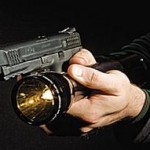
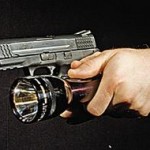
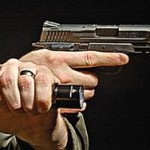
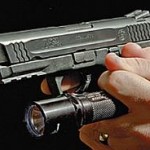
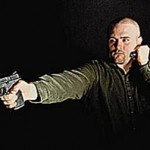
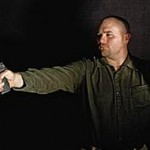
Pingback: Lycan